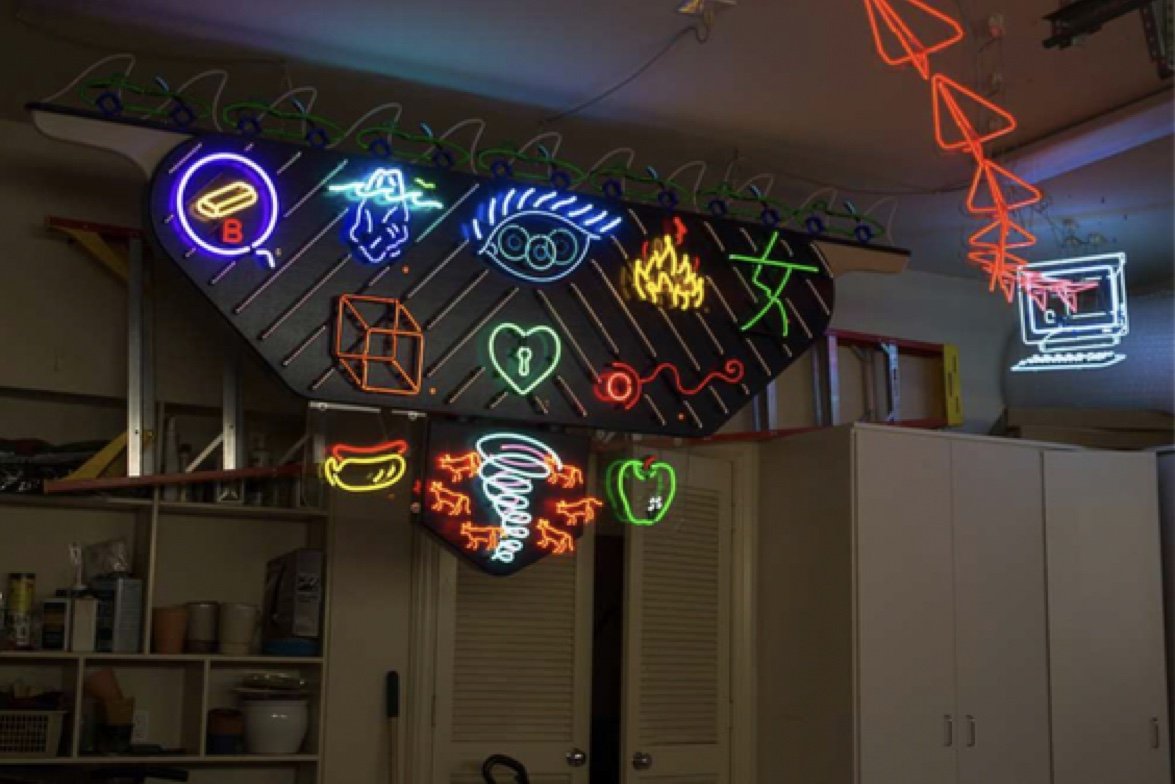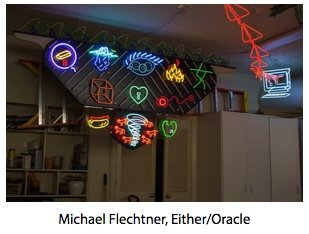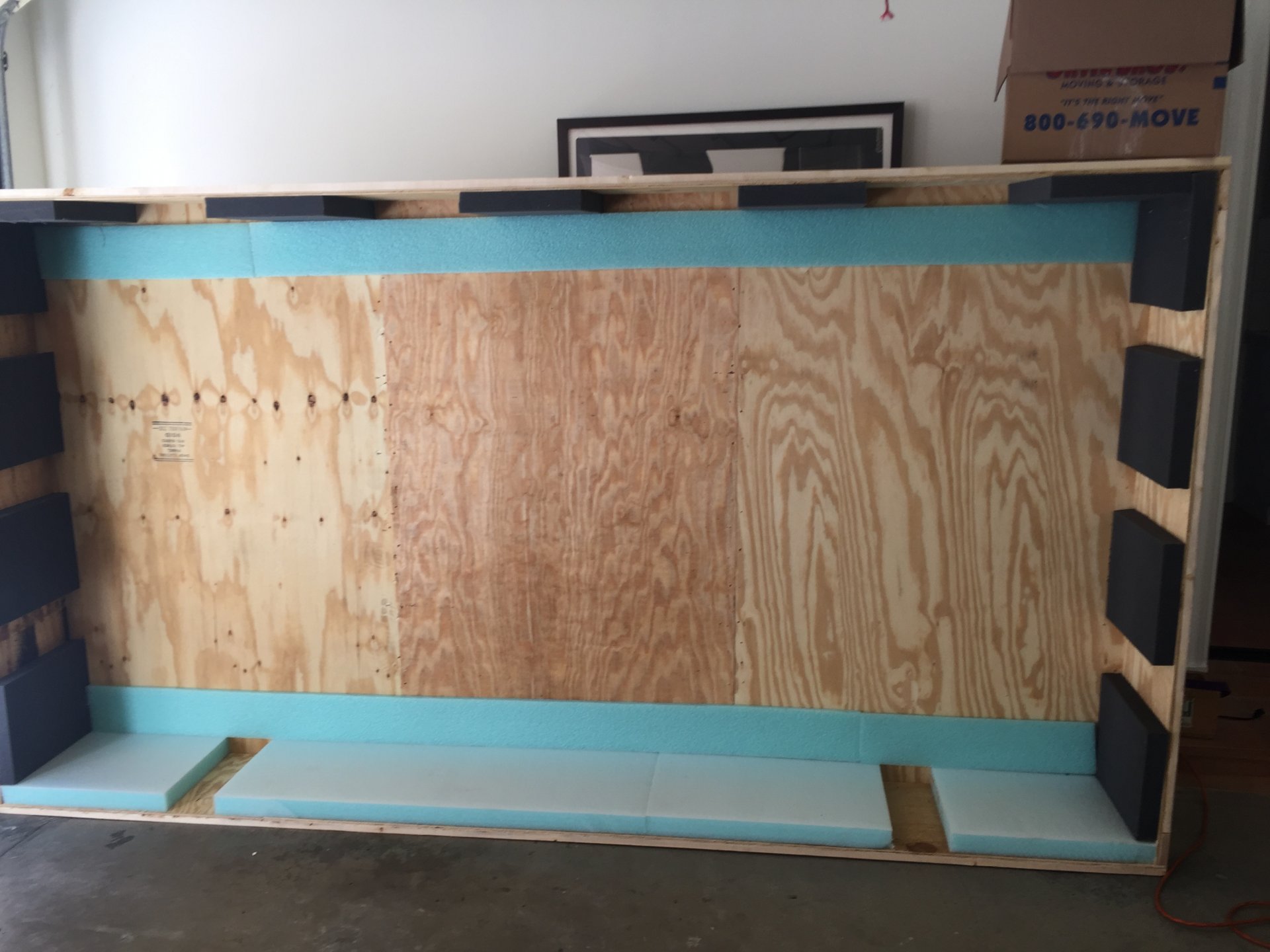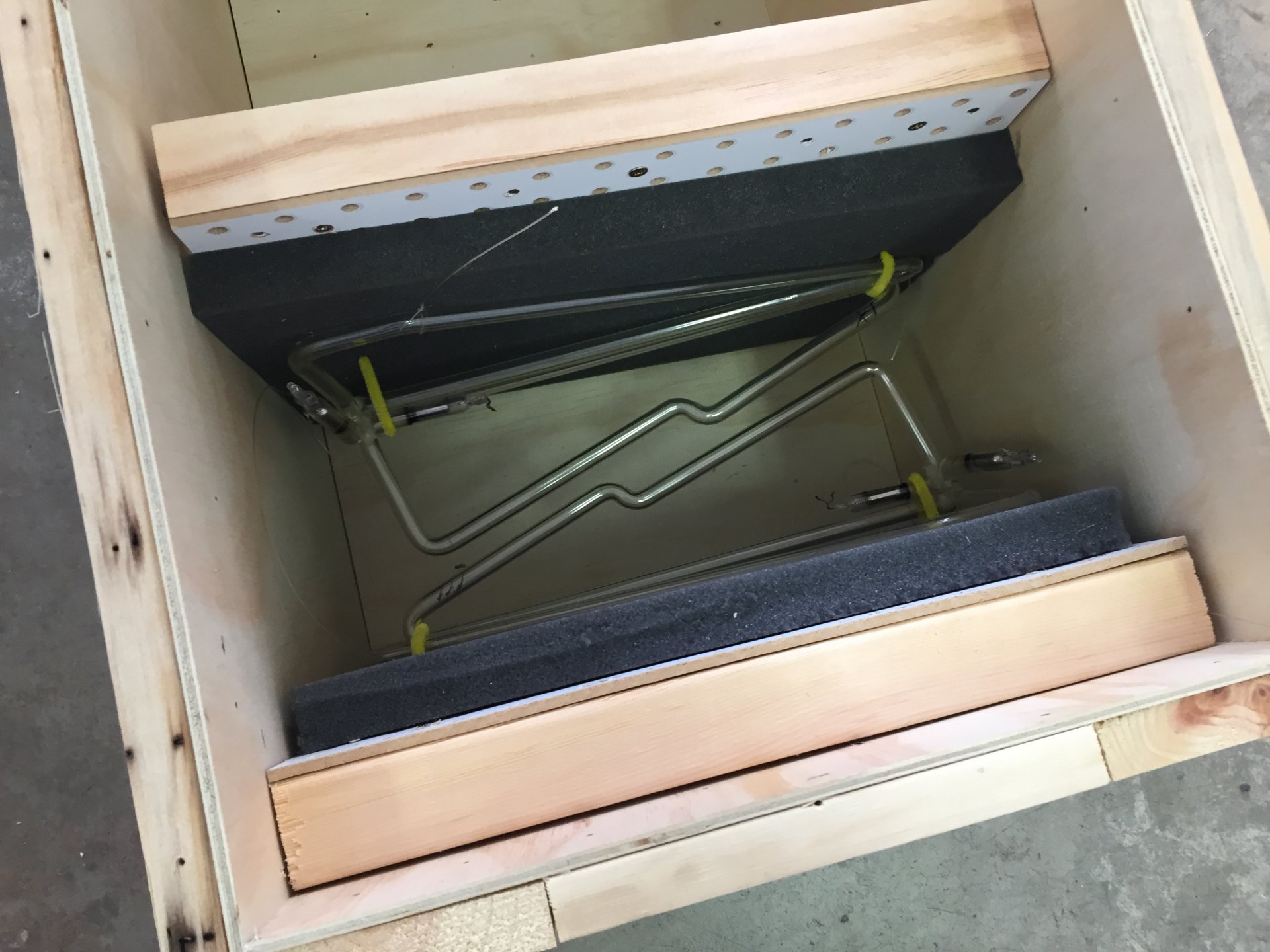
Moving Artwork: To Crate or Not to Crate
When my client said she was moving, my first question was, “What about the neon?!” Unless someone wanted to buy it with the house – it had to be removed which would involve crating…a lot of crating. Fortunately, I use the best crating company in Los Angeles. (I have worked with crating company’s around the world and I have to say – Diversified Logistic Services (DLS) puts all the others to shame.)
I moved this client into her home in 1994, 3 weeks AFTER the Northridge earthquake. She had an amazing collection of artwork, which, of course, has grown substantially over the past 24 years. Larger house = larger art collection! After a few years, she was running out of wall space. So in 2001 she commissioned this amazing neon artwork and had it installed in her garage. Yes, her garage! It’s titled Either/Oracle and it was created and installed by Michael Flechtner .

When the garage door is opened – the neon lights run through a program and create a “message” for her – which it “sends” out from the neon computer screen in the corner via neon paper airplanes! A very unique piece to say the least!

This is just one of many neon pieces she owns by Michael as well as other neon artists, like Candice Gawne. In fact, if you’ve ever seen this postage stamp, you’ve seen Michael’s work!
Besides having the best crating company – we also had the great fortune to have Michael on hand to help with the disassembly. Other than removing the shark fins and race cars across the top, the main “board” stayed intact. DLS built a crate within a crate to absorb any additional shocks while being transported. The main section was mounted to a slat crate seen here.

The nose of the large piece set snuggly on the foam support and the entire piece was attached to the slats. That “slat crate” was then set inside a solid crate with foam around the sides and base, which looked like this…

After the smaller crate was slid into place and secured, the front of the solid crate was screwed into place, but not before placing a couple device inside called “Shock Watch” and “Tip ’n Tell.” These alert anyone opening the crate whether the crate was handled or moved incorrectly. It’s all about liability!

DLS then built small frames of peg board covered with foam that fit inside several smaller crates. The neon airplanes and other small pieces were attached to the peg board using pipe cleaners. The individual frames were attached to the sides of the crate leaving the neon pieces “suspended” inside. Each piece was staggered (like shoes in a shoe box!) to maximize the number of pieces in each crate.
SEVEN
CRATES
LATER….
It was done!
And it was done correctly!
There are a million moving horror stories out there – but most of them are truly avoidable. For example, I have heard of movers who want to take items that require crating back to their warehouse AND THEN crate them. Where is the logic in that!??!? The whole purpose of crating something is so that it will not be damaged IN TRANSIT! If your mover suggests that, I would suggest a different mover!
When it comes to moving artwork – do your homework.
- Consult with experts to find the best way to move specific fragile items or art pieces.
- See if crating is required and/or worth the investment.
- Inspect your items with the person packing or crating them and note any marks or damage prior to packing or crating.
- Photograph your items as a “before” photo – to prove any damage.
- Most important: check with your insurance agent as to what is or is not covered during a move. Consider taking additional insurance with the mover to cover any gap between your homeowners policy and the movers insurance.
It doesn’t take an Either/Oracle to figure these things out!!! When you have the right team in place, you’ll be making informed decisions. THAT is the best way to avoid moving nightmares.